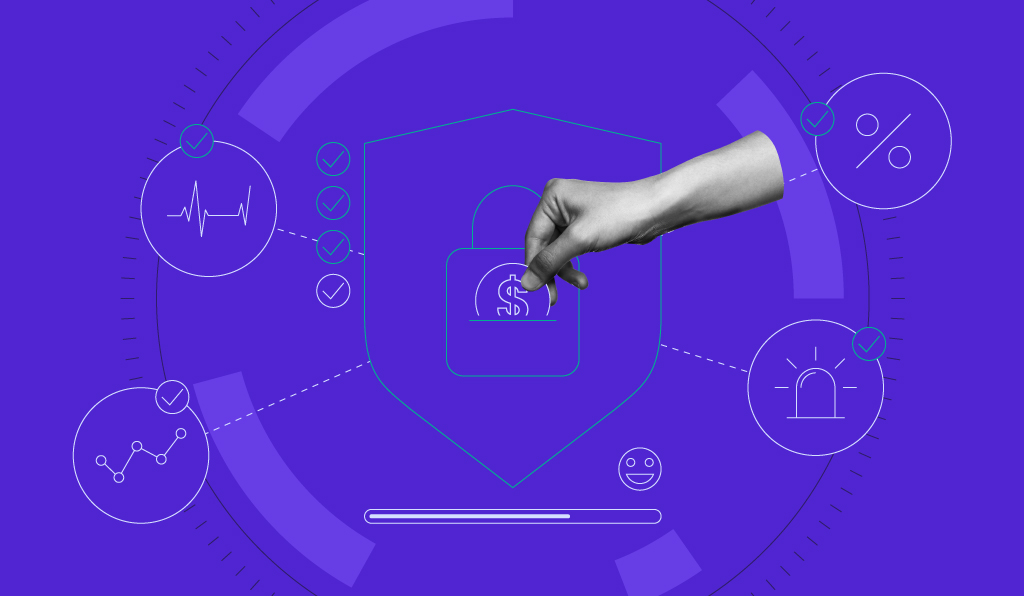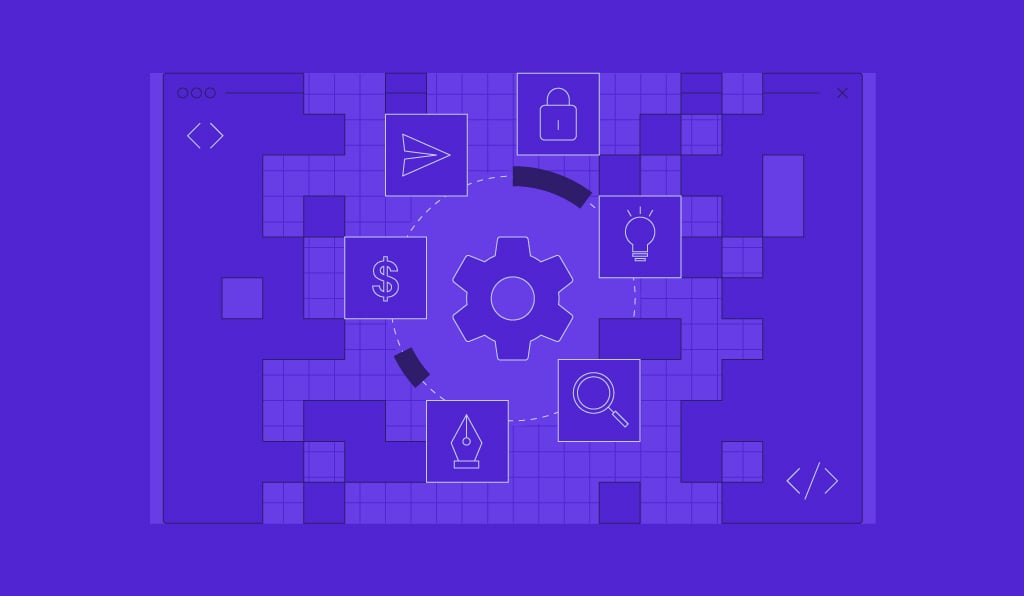How to Save for Retirement as a Freelancer: Secure Planning and Retirement Plan Options

Being your own boss has its perks, including independence and flexibility. However, you may miss out on several employee benefits, such as a fixed retirement plan.
In this article, we are going to explore why you should start saving for retirement now, how to start a retirement fund, and what to consider when creating freelancer or self-employed retirement plans.

Why Freelancers Should Save for Retirement Early
While saving for retirement is a general concern, 68% of freelancers in the US are anxious about it. Arranging your own plan takes a lot of time and budgeting. Therefore, the earlier you start, the better.
Here are some of the main reasons why freelancers should start planning for retirement now:
- Financial security. Having your retirement planned out will give you less financial stress, especially as a freelancer’s income can be unpredictable.
- Freedom to choose work. Once you have a savings account going, you can afford to choose projects that interest you but have a low financial return.
- Achieve long-term goals. Having secured funds means you can invest in other areas, such as education, a family plan, or trips.
Learn About Freelance Web Developing
How to Become a Freelance Web Developer
Top 40 Web Development Companies
How to Save for Retirement as a Freelancer
There are several ways freelancers and self-employed workers can start saving for retirement, such as monitoring their expenses and creating individual retirement accounts.
To save for retirement as a freelancer, monitor your spending, identify areas for savings, obtain health insurance, set up an emergency fund, save for tax payments, and open a retirement account such as a Solo 401(k), traditional IRA, Roth IRA, SEP IRA, SIMPLE IRA, or personal savings account based on your circumstances.
Let’s go over six steps you can take if you don’t have a workplace retirement plan to rely on.
Monitor Your Spending
Before focusing on building up your retirement savings, you should track how much you spend each month.
First, take your bank statement and write down your earned income and expenses. Then, divide all expenses into needs and wants.
For instance, housing, transportation, and utility bills go into needs. Dining out, streaming subscriptions, and event tickets go into wants.
The next part is determining a budget for your monthly needs and wants. Then, you can reserve the rest of your monthly income for retirement planning.
Determine Areas for Savings
Once you have a budget for your needs, start identifying areas for saving. For example, reduce the entertainment expenses and put the extra money towards your retirement plan.
If that sounds complicated, there are several personal finance formulas you can follow, one of them being the 50/30/20 rule. Divide your income into 50% for needs, 30% for wants, and 20% for savings. This way, maximizing retirement savings will be easier.
Get Health Insurance
One of the downsides of being a freelancer or a self-employed worker is not having health insurance covered by your employer – only 58% of freelancers have health insurance.
You shouldn’t overlook it since healthcare costs can quickly drain your savings in case of emergencies.
This is why it’s crucial to set up a health savings account. Check out individual plans from a reliable company, and include the costs in your budget for needs.
Have an Emergency Fund
As a freelancer, you may lose a client or have difficulties finding work. If that happens, you can take weeks or even months to replace that income.
Thus, having an emergency fund is just as important as having retirement savings. It’s advisable to have a separate savings account so it would easier to keep track of how much you have set for emergencies. Start with three months’ worth of personal and business expenses, then work on having six months and more.
Save for Tax Payments
Before moving forward with retirement funds, you need to calculate how much you will need to spare for taxes. Since tax payments differ, check out your local regulation first.
Depending on the savings account model you choose, you may need to pay income tax when withdrawing money during retirement.
Open a Retirement Account
Opening a retirement account greatly helps your retirement plans – you can get both tax benefits and compound interests.
The best retirement options for self-employed people and freelancers are:
Solo 401(k)
Unlike a traditional 401(k), Solo 401(k) is designed for individual business owners with no employees – with the exception of a spouse.
This option has the biggest contribution limit and tax advantages. You can even open a Roth IRA account simultaneously to maximize the tax benefits.
On top of that, you can take loans from the account with no penalties or taxes. So this may be a good option if you plan to scale your business in the future.
However, the setup process can be quite complicated. It’s best to set up a Solo 401(k) account with the help of a certified financial planner.
Traditional IRA
In a traditional IRA (individual retirement account), your earnings are tax-free during active years. However, you still need to pay taxes later on during retirement.
This option is right for you if you think you will be in a lower tax bracket during retirement.
Also, if you’re above the age of 50, you get to make catch-up contributions, meaning you have higher contribution limits.
Note that if you withdraw your contributions before the age of 59.5, you will get penalties. However, some withdrawals, like medical expenses, are exempt from this rule.
Roth IRA
Unlike a traditional IRA, in a Roth IRA account, you need to pay taxes during the years you contribute.
During retirement, the withdrawals are tax-free. This option is better if you believe you will be in a higher tax bracket during retirement.
Also, Roth IRA is a better option if you need to take money from your retirement account prematurely. You can withdraw the contributions anytime, although they may be subject to income taxes.
SEP IRA
A Simplified Employee Pension Plan (SEP) IRA is similar to a Traditional IRA. The difference is that SEP IRA is mostly targeted at individual business owners with no employees.
While Solo 401(k) has bigger tax benefits, a SEP IRA account is easier to set up, and contributions are tax-deductible.
However, like a traditional IRA, withdrawing contributions before the age of 59.5 will lead to penalties, and they will also be taxed as income.
SIMPLE IRA
SIMPLE stands for Savings Incentive Match Plan for Employees. Unlike other plans, it accepts small business owners with up to 100 employees.
Essentially, the employer will match employee contributions by up to 3%. If you’re the business owner, you can contribute as both – contributions to the employees’ accounts will grant you a tax deduction.
That’s why the contribution limit is significantly higher than other IRAs. SIMPLE IRA is also very easy to apply for, so it is a great option for small business owners.
Personal Savings Account
With a personal savings account, you can choose how much and when to contribute. You also have the flexibility to pull out the funds whenever you want with no penalties.
However, you miss out on all the tax benefits and compound interest that add up over time.
What to Consider When Choosing a Plan
Before choosing an investment strategy for retirement, make sure you’ve analyzed all the factors below.
Tax Brackets
To get a better tax outcome from your retirement savings account, we recommend comparing your income tax bracket now to the expected one during your retirement age.
Below are the recommended options for each tax bracket:
- Low tax bracket. Consider a plan that is tax-free now, like a SIMPLE IRA or SEP IRA.
- Middle tax bracket. Spread your savings between a traditional or Roth IRA and an account with large tax benefits like a Solo 401(k).
- High tax bracket. Maximizing your savings in a tax-deferred account with high contribution limits, like Solo 401(k), may be best.
Tax Savings
Most retirement accounts give you tax benefits. The question is when do you want to get them. You need to ensure that your plan’s tax benefit matches your long-term goals.
If you plan to expand your business, Roth IRA may be better. You can get a tax break later on when your business is generating a larger income and you reach a higher tax bracket.
If you think your income will be lower in the future, traditional IRAs may be perfect for you. It provides tax breaks now when your income and spendings are higher.
Access to the Money
You also need to consider access to the funds. If you think you may need money before the retirement age, choose either Solo 401(k) or Roth IRAs since both let you withdraw money prematurely.
If you are confident in locking in the money until you retire to reap the most benefits, other options are also good.
Relationship Status
Whether you’re married or single matters when choosing a retirement account. If you and your spouse work together in the business, choose one that lets you contribute together, like Solo 401(k) or SIMPLE IRA.
In other plans, your spouse may be counted as an employee, meaning you are not eligible to apply.

Conclusion
In this article, we’ve discussed why freelancers should start saving for retirement early and explored the many ways you can start doing it.
Depending on your location, the main options are creating a Solo 401(k), traditional IRA, Roth IRA, SEP IRA, SIMPLE IRA, or a personal savings account.
The most suitable option will depend on your tax bill, contribution limits, and whether or not you are a small business owner.
We hope this article will help you prepare for retirement. Don’t forget to browse our other tutorials to learn ways to boost your freelance income.
Learn More Freelancer Tips
How to Write an Email Invoice
How to Calculate Hours Worked
How to Move From Freelancer to Agency
Fiverr vs Upwork
Facebook Networking Tips
How to Start a Web Design Business
Saving for Retirement as a Freelancer FAQ
Here are some frequently asked questions about freelance retirement savings.
Which Retirement Plan Is Best for Freelancers?
The best plan will vary according to your situation – your tax bracket, whether you’re married or employ someone, and long-term plans.
How Much Should a Freelancer Save?
The amount depends on your current expenses and future plans. However, it’s best to save as much as you comfortably can.
Since freelancers and self-employed workers have irregular incomes, you may need more emergency funds and savings reserved for unexpected situations.
How Do Freelancers Save on Taxes?
You can save on taxes by contributing to a retirement savings account. Depending on your choice, your contributions may be tax deductible now or during retirement.

